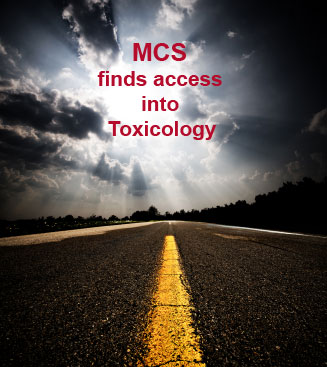Environmental Medicine – Dr. Martin Pall about Chemical Sensitivity
The NO/ONOO-cycle has been recognized in many extraordinary ways over the past several months, such that it should be viewed as THE predominant model of this previously unexplained disease.
I was invited to give the initial address at the European Environmental Medicine meeting in Wurzburg, a two day meeting that was largely dominated by the NO/ONOO- cycle mechanism. This was part of a „grand European tour,“ giving seven talks in five countries. These included being the only non-European invited to address the European Union Parliament (The Council of Nations) at a special meeting on Environmental Medicine.
There were also two special mini-symposia organized to correspond to my visit in Europe, another great honor. I gave talks in Italy, Germany, Austria, Switzerland and France, including talks at three medical schools. So there has been extraordinary recognition of the NO/ONOO- cycle mechanism, a mechanism that is helping people in many countries around the world to actually lessen their chemical sensitivity responses.
I might add that there was a book written in German on multiple chemical sensitivity, with Hans-Ulrich Hill as first author, that is largely focussed on the NO/ONOO- cycle mechanism of MCS.
While these are all extraordinary recognition for this science, the most important recognition is elsewhere. I have been asked to write a review on MCS, to be a chapter in a very prestigious multivolume set on toxicology, and that review has been accepted and will be coming out this coming autumn. This is extraordinarily important for at least four distinct reasons.
The first, of course is that MCS has been largely ignored by the toxicologists, despite its high prevalence in the U.S. and in other populations because they have felt that there was no reasonable explanation for it. Now, clearly, they find that we now do have a compelling and well-supported explanation for MCS and therefore it should be integrated into the larger framework of toxicology.
Secondly, the fact that they asked me to write this review is obviously extraordinary recognition for my own work in developing, for the first time, this detailed and well-supported mechanism, as we! ll as for the mechanism itself.
Thirdly, this review is the longest such review on MCS ever written, as well as the most extensively documented, having well over 400 citations in it.
Fourthly, there are several very important types of evidence that were new to me, supporting the NO/ONOO- cycle mechanism that are reviewed in this chapter, including important studies of the mechanism of toxic action of the seven groups of chemicals implicated in MCS, including important animal model studies of MCS implicating almost all of the NO/ONOO- cycle elements and including a series of published studies of various objectively measurable responses to low level chemical exposure, responses that are consistent with the NO/ONOO- cycle and that should be developed as specific biomarker tests for MCS.
When this paper comes out, we as a community concerned about the suffering of the millions of people who are chemically sensitive, will have a unique opportunity to dramatically change the views of the general public, the news media and even the court system of this horrible world-wide epidemic. That opportunity will come because of the essential juxtaposition of rigorous science and extraordinary recognition.
Martin L. Pall


Kommentar abgeben: